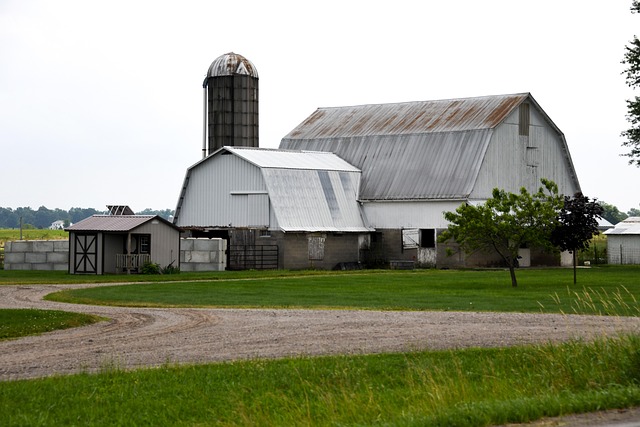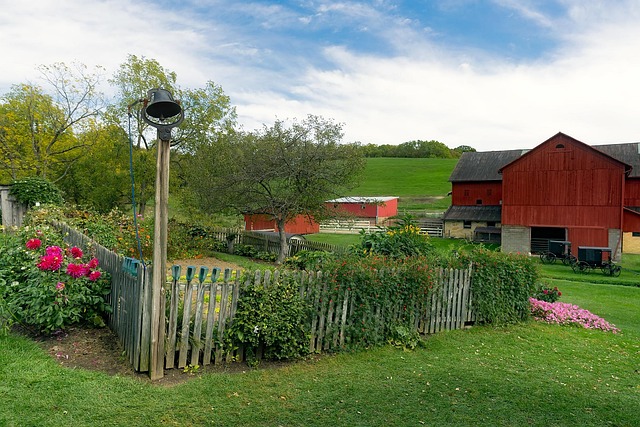The Amish are a group of traditionalist Anabaptist Christian communities that originated in Europe and later migrated to North America to escape persecution. They are mostly known for their basic and simple lifestyles and avoidance of modern conveniences and technologies. It has long been believed that Amish children do not suffer from allergies, and scientists have said they may now know why. Looking at childhood allergy causes and comparing the rates of other children’s allergies to Amish kids’ allergies, the researchers made some interesting discoveries. So, why do Amish children have fewer allergies? Let’s find out in the article below.
Why do Amish Children have Fewer Allergies?

A recent report from Stanford Medicine revealed that almost 40% of the global population has at least one allergic condition. In the United States, that number is even higher, with more than 50% of all children suffering from some sort of allergy. Yet, for some reason, one community in America seems to be much less susceptible to allergies, the Amish. While 50% of America’s children suffer from allergies, only 7% of Amish children have the same problem. Additionally, while around 8% to 10% of American children suffer from asthma, only around 1% to 2% of Amish children suffer from the same issue.
To find out why the percentage of Amish kids’ allergies was so much lower, the researchers set out to examine the homes and surroundings of Amish families. They also compared the lifestyles of the Amish to other similar traditional farming communities, such as the Hutterites. Both Hutterites and the Amish share a similar lifestyle and even ancestry, yet only Amish kids displayed very low rates of asthma and allergies. This suggested that ancestry and genetics weren’t a significant factor, and so they looked for differences in their environment.
What they discovered was that pregnant Hutterite mothers and little children didn’t go into the animal barns. Typically, these children would only be exposed to these barns when they started doing farm work at the age of 12. In comparison, the Amish children were constantly in and around the barns from a very early age. Upon comparing dust samples from both Hutterite and Amish households, the researchers found that there were almost seven times more microbes in the dust from the Amish homes. Therefore, not being exposed to these microbes at a young age could be one of the childhood allergy causes.
Testing the Theory About Amish Kids’ Allergies

To test if their theory was correct, the researchers exposed mice to dust from the homes collected from both communities. The mice that had inhaled the Amish house dust exhibited far less airway inflammation after being exposed to allergens. However, this benefit was exhibited by those who had inhaled the dust from the Hutterite homes. This indicates that regular exposure to farm microbes at an early age helps train the immune system. This enables their bodies to act more calmly to allergens such as food or pollen. This process is known as the ‘farm effect’.
In a subsequent study conducted in 2023, researchers identified specific proteins in the dust from the Amish homes. These special proteins transport plant and microbial molecules directly to the airways, helping to regulate the body’s immune responses. They found that early exposure to barn dust created an internal shield that kept reactions that trigger allergies under control. This breakthrough is important as most modern allergy treatments only focus on managing the symptoms. However, what is really needed is a way to prevent allergies from developing in the first place.
How Will This Help Other People Without Access to a Barn?

Sure, that’s great news for the Amish folk, but how does it help people like us who haven’t had access to a barn from childhood? Well, the researchers believe that by studying the microbes inside the dust, they can replicate the Amish environment’s protective properties. They could, for example, develop various nasal sprays and probiotics or other such proactive solutions. They can even possibly create a treatment derived from the dust that can train children’s immune systems in their early years.
These potential treatments might also include oral supplements that have been designed to expose children to certain microbial elements in a controlled and safe manner. If proven successful, these treatments can simulate the farm effect without actually needing to have a cow barn in your backyard. This research has also reinforced long-held beliefs that ultra-sterile environments don’t necessarily equate to health. Instead of trying to avoid certain microbes, we should be making sure that we get enough of them to build up a defence against various allergens. By doing so, we may see a reduction in allergy rates in both the United States and the rest of the world.

